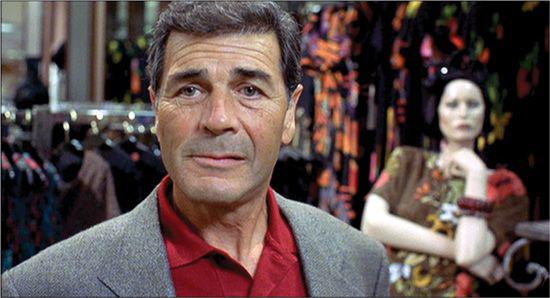B0041VYHGW EBOK (119 page)
Authors: David Bordwell,Kristin Thompson

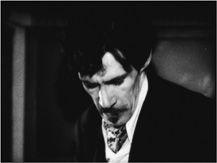
7.39
Stagecoach.
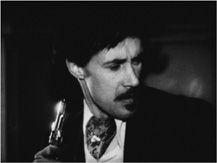
7.40
Stagecoach.
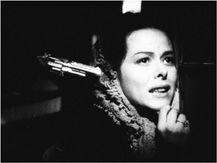
7.41
Stagecoach.
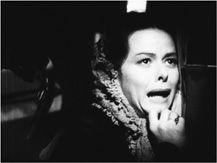
7.42
Stagecoach.
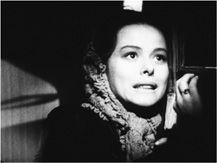
7.43
Stagecoach.
A CLOSER LOOK
OFFSCREEN SOUND AND OPTICAL POINT OF VIEW: The Money Exchange In
Jackie Brown
Optical point-of-view cutting can be very powerful, as we saw in examining
Rear Window
(
p. 245
). Now we’re in a position to see—and hear—how it can be coordinated with onscreen and offscreen sound. Quentin Tarantino’s
Jackie Brown
offers an illuminating example because, somewhat in the spirit of our sequence from
Letter from Siberia
(
pp. 270
–
271
), it runs the same sequence of actions three times, with varying sound tracks. Unlike Chris Marker’s film, however,
Jackie Brown
shows the scene as different characters experience it.
Jackie is supposed to deliver over half a million dollars in cash to the dangerous arms dealer Ordell. Ordell has sent his girlfriend, Melanie, and his partner, Louis, to pick up the money from a fitting room in a dress shop. Jackie, however, is playing her own game. She’s agreed to help federal agents arrest Ordell, but she has also recruited the bail bondsman Max Cherry to help her switch shopping bags and leave Ordell empty-handed. This story action is presented three times in the plot, each time adding a layer to our understanding of what’s really happening. It would be worthwhile to study the careful auditory touches in these three sequences, such as the replay of the shop’s Muzak and the delicate Foley work on footsteps, fabric, and other noises. Here we’ll concentrate on optical subjectivity and offscreen sound, because these techniques are crucial in making the triple play clear to the audience. They also serve to contrast the squabbling, inept gobetweens whom Ordell is relying on and the self-possessed Jackie and Max.
The first run-through confines us to Jackie’s range of knowledge. She tries on a pantsuit, and the sales-woman says, “Wow, you look really cool!”
(
7.24
).
Jackie goes back to the fitting rooms and waits for Melanie. We hear Melanie arrive offscreen, and Tarantino shows us her shoes from Jackie’s viewpoint. After Melanie has left, Jackie repacks the money in a shopping bag she leaves in the cubicle and hurries out. She hastily pays the sales clerk, who calls after her, “Wait, your change!” and waves her bills
(
7.25
).
Jackie rushes out to the mall and summons the federal agents, shouting that Melanie stole the bag from her.
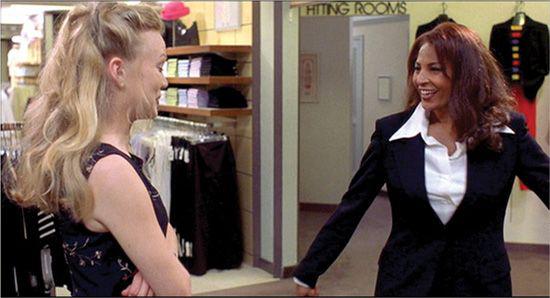
7.24 The first run-through: The sales clerk tells Jackie, “Wow, you look really cool!”
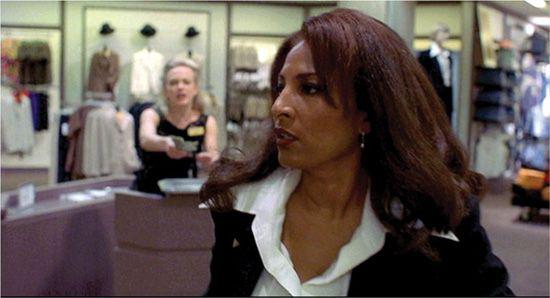
7.25 After Jackie has left the money in the fitting room, she hurries away, pretending to be distraught. The clerk calls after her, “Wait, your change!”
Tarantino flashes back to an earlier phase of the action, with Louis and Melanie arriving at the shop. As the camera follows them
(
7.26
,
7.27
),
we hear the saleswoman say from offscreen, “Wow, you look really cool!” The camera pans to Jackie and the clerk
(
7.28
).
The offscreen sound has motivated showing this dialogue again, and its unnatural loudness assures that we understand that we’re entering the scene at a point we’ve already witnessed. Louis and Melanie try to look inconspicuous, with Melanie distracted by Jackie’s striking outfit. When Melanie teases Louis about his nervousness, he twists her arm, and she blurts out, “Hey, would you let go!”
(
7.29
).
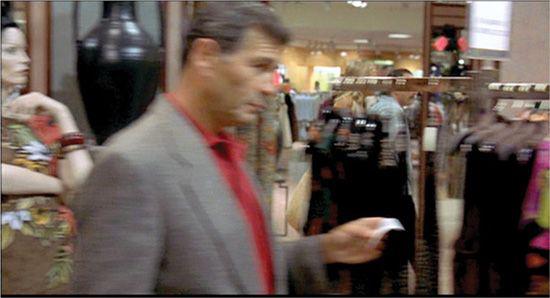
7.26 The second version: As Melanie and Louis head toward the shop, the camera tracks rightward with them, passing Max Cherry in the foreground.
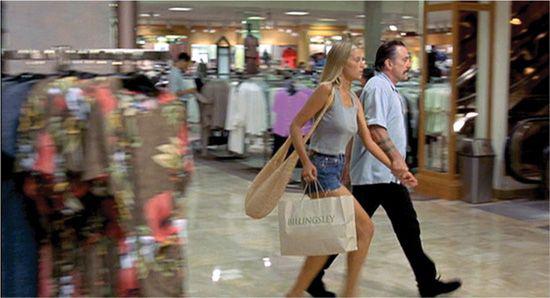
7.27 As Melanie and Louis approach, we hear, “Wow, you look really cool!” fairly softly.
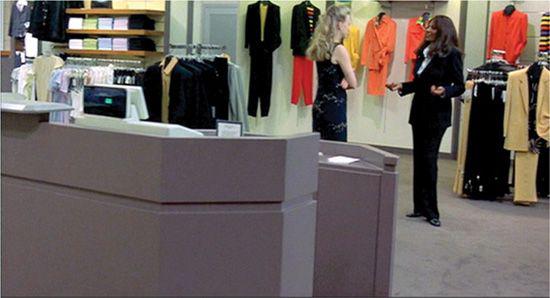
7.28 The camera pans to pick up Jackie and the clerk, as Jackie says she’ll buy the outfit. Sound perspective makes the dialogue louder and clearer, emphasizing that this is a repetition of the scene we’ve just witnessed. Compare
7.22
.
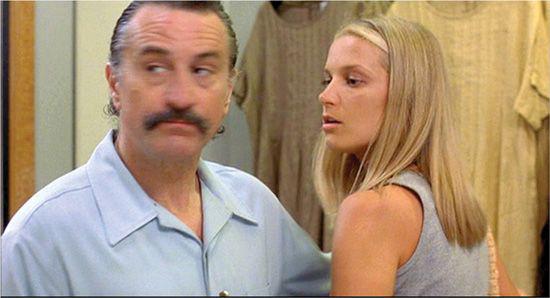
7.29 Quarreling at the garment racks, Louis grabs Melanie’s arm and she snaps, “Hey, would you let go!”
Tarantino now uses offscreen sound to test Louis’s dull wits. Louis looks down at the shirts he’s riffling through
(
7.30
),
and we hear an offscreen phone ring. Louis doesn’t look up, but we are given a shot of the clerk answering
(
7.31
).
What does get Louis’s attention is Melanie, who abruptly strides into the fitting rooms. Looking uneasily this way and that, Louis sees Max, whom he dimly recognizes, and the two men exchange glances in shot/reverse shot. Then Melanie hustles out of the fitting rooms, and Louis catches up with her. They leave quarreling about who should carry the bag.
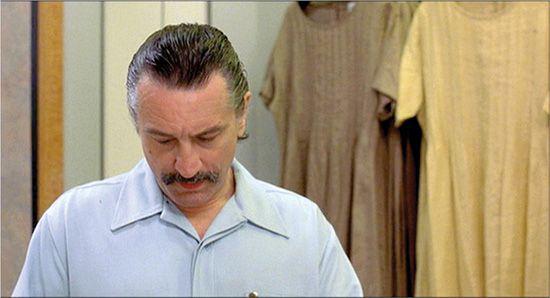
7.30 Louis browses through shirts. At the end of the shot, a telephone rings offscreen.
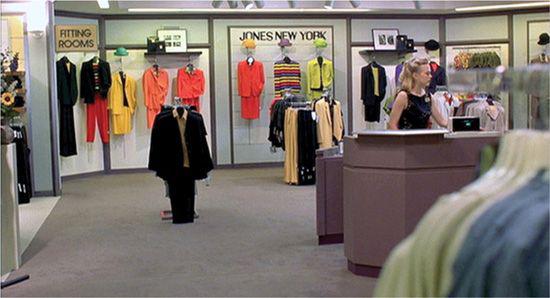
7.31 The clerk answers the phone, but this isn’t Louis’s point of view; it’s close to what he might have seen if he
had
looked up.
The scene runs a third time, now attaching us to Max’s range of knowledge. The second version hinted at his presence in the shop, when the tracking shot following Melanie and Louis glided past him in the foreground (
7.26
). We see him enter and browse, waiting calmly for the scam to begin. Once more Jackie comes out wearing the outfit, and the sales clerk says, “Wow, you look really cool!” But now the exchange is observed from Max’s point of view
(
7.32
,
7.33
).
The sound track fades out the dialogue between the clerk and Jackie and fades up the quarrel between Melanie and Louis. Max turns his attention to them and then back to Jackie and the clerk. Here the sound mixing is quite subjective, conveying Max’s shifting attention between the two conversations.
